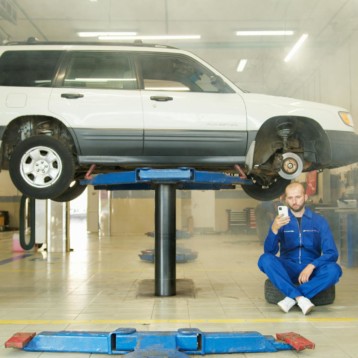The trucking industry is undergoing a significant transformation with advancements in technology enhancing the safety, efficiency, and reliability of semi-trucks. Being out on the road can be hard enough, never mind for long periods of time. The reliability of trucks paired with other safety lessons for drivers can ensure they stay as comfortable as possible on the road. Buying the best 223 ammo for sale and having alarms in your bag are great if you’re in survival mode and not at work, but the technological advances of the trucks you’re driving is what will really keep you safe on the road. These innovations are crucial in reducing accidents, protecting drivers, and ensuring the safe transportation of goods. Here, we explore the top 10 technologies that are revolutionizing semi-truck safety.

1. Advanced Driver Assistance Systems (ADAS)
ADAS are designed to automate and enhance vehicle safety. Features like adaptive cruise control, lane departure warnings, and collision avoidance systems help prevent accidents by alerting drivers to potential hazards and, in some cases, taking corrective actions.
Key Benefits:
- Reduces driver error
- Minimizes the risk of collisions
- Enhances overall driving experience
2. Electronic Logging Devices (ELDs)
ELDs are mandated in many regions to ensure compliance with hours-of-service regulations. These devices automatically record driving time, helping to prevent driver fatigue, which, according to a San Diego semi-truck accident attorney, is a significant cause of accidents.
Key Benefits:
- Ensures compliance with regulations
- Reduces driver fatigue
- Enhances road safety
3. Telematics
Telematics technology enables real-time tracking of vehicles, providing valuable data on driving behavior, vehicle performance, and route optimization. This information helps fleet managers make informed decisions to improve safety and efficiency.
Key Benefits:
- Real-time vehicle tracking
- Improved route planning
- Enhanced driver behavior monitoring
4. Blind Spot Detection Systems
Blind spot detection systems use sensors to monitor areas around the truck that are difficult for the driver to see. These systems alert drivers to the presence of vehicles in their blind spots, reducing the risk of side collisions.
Key Benefits:
- Enhanced situational awareness
- Reduced risk of side collisions
- Increased driver confidence
Also Read: How Automation in Transportation Could Reduce Truck Accidents
5. Tire Pressure Monitoring Systems (TPMS)
TPMS continuously monitor the air pressure in a vehicle’s tires and alert the driver if the pressure drops below a safe level. Proper tire pressure is critical for vehicle stability and preventing blowouts.
Key Benefits:
- Prevents tire blowouts
- Improves fuel efficiency
- Enhances vehicle stability
6. Automatic Emergency Braking (AEB)
AEB systems detect an imminent collision with another vehicle or obstacle and automatically apply the brakes if the driver does not respond in time. This technology can significantly reduce the severity of accidents or prevent them altogether.
Key Benefits:
- Prevents rear-end collisions
- Reduces accident severity
- Increases reaction time
Also Read: Advancements in Trucking Technology
7. Stability Control Systems
Electronic Stability Control (ESC) and Roll Stability Control (RSC) systems help maintain vehicle stability by detecting and reducing loss of traction. These systems are especially beneficial in preventing rollovers and skidding.
Key Benefits:
- Prevents rollovers
- Maintains vehicle control
- Reduces skidding incidents
8. Driver Fatigue Monitoring & Deterrents
Driver fatigue monitoring systems use cameras and sensors to track driver behavior, such as eye movement and steering patterns. If signs of fatigue are detected, the system alerts the driver to take a break. Improvements in sleeper-cab components such as noise reduction upgrades and improved semi-truck mattresses also act as deterrents to driver fatigue, as they allow operators to get more quality sleep during their rest times.
Key Benefits:
- Identifies signs of driver fatigue
- Promotes timely rest breaks
- Reduces the risk of fatigue-related accidents
9. Enhanced Visibility Solutions
Advanced lighting systems, including LED headlights and adaptive lighting, improve visibility for truck drivers, especially in low-light conditions. These systems adjust the direction and intensity of the lights based on the driving environment.
Key Benefits:
- Improves night-time visibility
- Enhances road safety
- Reduces driver stress
10. Connected Vehicle Technology
Connected vehicle technology allows semi-trucks to communicate with each other and with infrastructure, such as traffic signals and road signs. This communication helps in providing real-time traffic information, weather updates, and potential hazard alerts.
Key Benefits:
- Real-time traffic and hazard alerts
- Improved route planning
- Enhanced situational awareness
The integration of these cutting-edge technologies is transforming the trucking industry, making semi-trucks safer and more efficient. As technology continues to evolve, we can expect even more innovations that will further enhance the safety and reliability of semi-trucks on the road. Embracing these advancements is crucial for fleet managers and truck drivers to ensure a safer and more efficient transportation system.










